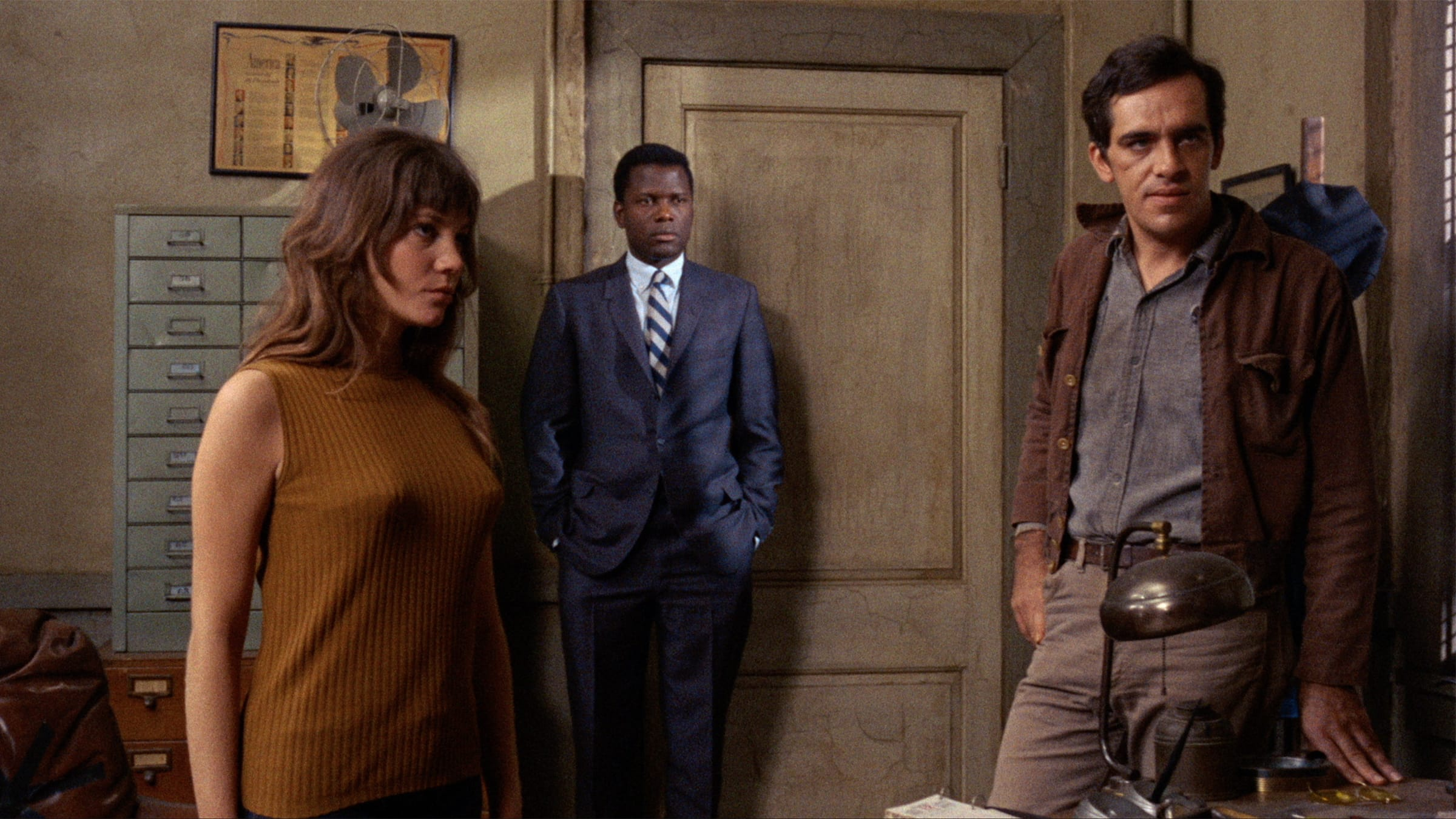In the Heat of the Night: The Double Bind

In the Heat of the Night (1967) opens with an air of mystery, of outsiderness winding its way into the small town of Sparta, Mississippi, a place that right away seems heavy with a sense of what belongs and what doesn’t. As Ray Charles croons the film’s title song, images of a railroad crossing, tinged with red and blue lights, fill the screen. A train has just arrived. And a man, faceless, carrying a briefcase and already somehow marked by his difference, has just stepped off of it.
The images that immediately follow, with their emphatic sense of texture and temperature, prompt us to make inferences about where we are. It is a small, shaggy town, surely; otherwise, a cop on a night beat would have a better place to grab a bite than a nothing little diner plagued by flies and a stingy, cankerous keep—a telling detail in himself, the kind of homegrown grotesque that suggests that the danger we already sense, whatever it is, could be coming as much from within as without. This is a movie set on convincing us that the world it depicts—the American South of its historical present, where that latent danger, the intimation of racial conflict to come, is a fact of life—really exists. A patrol car making its rounds reveals Sparta to us glimpse by disquieting glimpse, the car’s headlights leading the way through the dust and darkness of the streets.
Director Norman Jewison was still in the first decade of his Hollywood career when he took on In the Heat of the Night. His paranoid comedy The Russians Are Coming, the Russians Are Coming, part of a two-picture deal with United Artists, had been a success the year before, and In the Heat of the Night was the immediate beneficiary. It was originally slated to be filmed on a studio lot; thanks to Russians, Jewison got the okay to film on location. And he also got his cinematographer, Haskell Wexler, to do something he’d never done before: shoot in color.
In fact, In the Heat of the Night was filmed in Sparta, Illinois—not the South at all. Sidney Poitier, the film’s estimable black star, then at the height of his career, refused to shoot below the Mason-Dixon Line, and especially in Mississippi, on his last visit to which he and Harry Belafonte had had a run-in with the local Ku Klux Klan. Knowing that fact somehow adds to In the Heat of the Night’s sense of unsettling realism. And that is key for a film that otherwise often plays like a movie with genre on the brain. There is, of course, the mystery that Poitier’s character, the righteous Detective Virgil Tibbs from Philadelphia, finds himself obliged to solve for Sparta, but I can’t help but also notice certain western tropes piling up in the opening minutes, from Tibbs as the stranger who’ll bring justice to the community, to the Main Street that’s as eerie in its nighttime abandonment as any thoroughfare in a desert outpost—all that’s missing are tumbleweeds. Even one of the film’s most finely drawn characters—the big-talking good-old-boy chief of police Gillespie, played by Rod Steiger (he took home one of the film’s five Oscars for his performance)—fits into this reading as the amoral lawman whose own bias distorts his idea of what qualifies as justice.
“The refreshingly fiery Poitier was certainly not leaning on what was established about his image.”
“What appears, on its surface, to be a mere tale of black-and-white brotherhood is, from the outset, something more original.”






